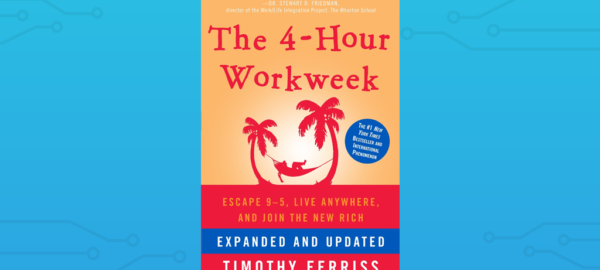— October 19, 2018

When Michael E. Gerber gives you advice for starting a business you listen to it.
With a career spanning over 40 years and working with hundreds of thousands of companies worldwide, Gerber’s expertise is invaluable to anyone looking to start their own venture. Lucky for us, he’s written several books on the topic, the most famous of which I’ll be summarizing in this post.
This E Myth summary will take the core business tips from Gerber’s work and condense them into a single post. It’s all of the value, proven with examples from companies like Facebook and Zenefits, and doesn’t need you to spend 40 years to learn it.
In particular, I’ll be covering:
- Balancing your business personalities
- Creating a business, not a job
- Working on your business, not in it
- Why your business needs systems
- The idea of your business being your product
- Motivating employees with the idea behind their work
- Make topics human to make them interesting
Let’s get started.
Balance your business personalities
Setting up a business isn’t all about entrepreneurial spirit and vision. In fact, that’s just one of three personas you need to learn to balance in order to see any success.
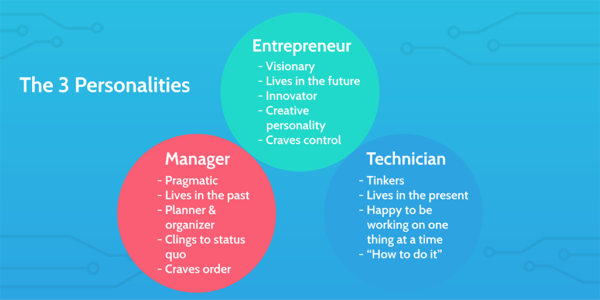
The Entrepreneur provides your vision and future goals, the Manager organizes everything and establishes a status quo, and the Technician does the work. Each has flaws but together they create a healthy attitude toward creating and growing a small business.
Vision tends to come most easily to those setting up their own business. The real challenge comes with balancing that vision and the ideas you get with creating systems and managing your business while focusing on the work that actually matters.
Take Richard Branson for example.
His first business (at age 15) sprouted out of a desire to voice opinions which were considered too “revolutionary” for his school’s existing magazine, aptly named The Stoic. Student magazine allowed Branson to do just that.
The Entrepreneur saw a vision of a magazine where they could speak without censorship. The Manager set up a way for contributors to collaborate and formed the business model. The Technician buckled down, wrote what he wanted to talk about, reached out to different schools for collaborators, arranged distribution and enough advertising to give the magazine away for free.
“Jonny Gems and I wanted to set up an alternative magazine with a fresh attitude. We wanted to campaign against corporal punishment, compulsory chapel, games and Latin.” – Richard Branson, A Student with a Plan
Create a business, not a job
An easy trap when setting up a business is to do so because you think “I’d like to do X all day” or “I should be doing that – I’d be better than them”.
That’s not an idea for a business. That’s a job leading straight to a dead end.
“If your business depends on you, you don’t own a business – you have a job. And it’s the worst job in the world because you’re working for a lunatic!” – Michael E. Gerber, The E Myth Revisited, p. 40
If all you want to do is climb the ladder or earn money, follow that idea while working for others. Prove that you can perform better than others and reap the rewards but without the headache of managing the business behind each role.
If you want to create a business, take a step back and first think about what kind of lifestyle you want to have. This dictates the kind of business you’ll need to create, which will give your Entrepreneur some rough parameters and a direction to go with when thinking of ideas. The Technician can then get to making it work.
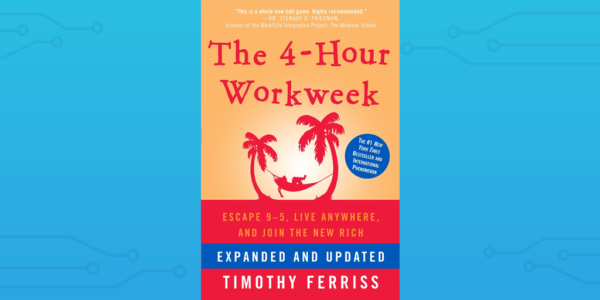
Just look at lifestyle businesses – these are entirely set up to support the founder in a given lifestyle. Figures like Tim Ferris have championed this idea with The 4-Hour Work Week, although it’s admittedly hard to pin down a specific example of this advice from Gerber in action.
Gerber is mainly focused on traditional physical businesses, such as the bakery which he uses as a running context through the book. Not only that, he’s also only really concerned with businesses which want to grow and become more widespread or profitable.
In other words, there isn’t a specific example to prove this point because every successful small business does this. Or, at least, the businesses Gerber is talking about (small businesses looking to grow and potentially be sold further down the line).
A small business created as a job for its owner won’t grow because the owner is too busy doing all the grunt work they’ve made for themselves.
Work on your business, not in it
Following up on the previous point, Gerber doggedly reinforces the idea that you need to be working on your business rather than in it. You’re the founder, not a single-role employee.
Many startup owners know the pain of learning what, how, and when to delegate work. It’s impossible to keep doing the same things day-to-day as the business grows if you want to maintain the business’ health but it’s equally hard to let go of the jobs you’ve been doing relentlessly (and perhaps love to do).
Yet, if you don’t, either you or your business will collapse.
You can hire people to do things like write blog posts, cook food, make toys or whatever else the business is designed to do. You need to work on your business directly, be it by managing your processes, analyzing where you can go next or how to grow, and so on.
Don’t believe me? Just take a look at Mark Zuckerberg.
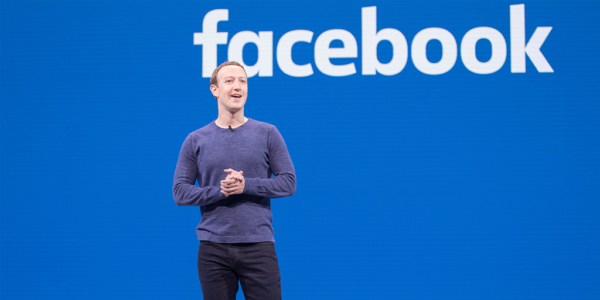
Zuckerberg has spoken a couple of times about wanting to code all the time, and how he misses it. However, Facebook is too large a company for its CEO to spend time working on the product. It’s his job to work on Facebook at a high level – he physically doesn’t have time to go in and work on background bugs.
“There is an elegance to writing code that I miss… The code always does what you want – and people don’t.” – Mark Zuckerberg, Mark Zuckerberg Admits He Misses His Coding Days
It’s not like he wanted to stop coding. However, if he hadn’t, Facebook wouldn’t be such a massive success with a valuation of over $ 100 billion.
Create systems for your business
To be successful, your business needs to have some sort of continuous improvement. It needs to get better, whether that means increasing efficiency, profit margin, decreasing waste, increasing your audience, and so on.
To do that you need to be able to perform consistently.
To do that, you need Hard, Soft, and Information Systems.
These are the names Gerber gives to account for various aspects of your business which need recording in some way. Hard Systems are anything that isn’t malleable or alive (the color of your office, business appearance), Soft Systems are ideas and living things (what to do and how to do it, including business processes) and Information Systems include tracking and managing data (such as checklist records).
Combined, these three create a system and record for everything which can be referred to to instruct, analyze and improve every aspect of the business.
Unfortunately, these systems are a little too vital to how businesses are run to give you a set example. However, that doesn’t mean we can’t hypothesize from what we know.

Let’s look at HMV – a British retail store focused on music which is successful enough to give Amazon a run for its money.
HMV’s Hard Systems include the brand’s icon (a dog in front of a gramophone), colors (black and pink), lettering, interior design, and so on. These are decided to give the brand a consistent feel and allow customers to recognize the shop at a glance.
The Soft Systems include things like their selling process, policy on customer interaction, returns process, store opening and closing, and so on. These tell employees how to act and perform their tasks consistently to make sure that everything is done quickly and effectively every time.
These systems also dictate how customer interactions should be operated, meaning that HMV can tailor the customer experience and make it as consistent as possible to provide their brand some authenticity and reliability. For example, employees might be instructed to ask customers if they need help only if they’ve been browsing for 10 or more minutes to avoid being too intrusive while still providing value and help where needed.
Finally, their Information Systems would likely be made up of things such as sales records, employee timesheets, customer survey responses, and so on. These allow the teams and their higher-ups to assess how business is going and improve based on that.
For example, if they notice that a particular band is picking up in popularity they could either order a larger stock of their items or consider running a promotion on something which isn’t selling too well to avoid holding excess stock.
Know that your business is your product
It might sound counter-intuitive but you’re selling people on your business, not your product.
Think of your audience as three separate groups – customers, employees, and those buying your business directly. Each of these interacts with you in a different way but all three are buying into your business as an idea, not just your product.
When products are similar, customers make their choice based on the business selling them through things like brand recognition and affinity. Employees need to understand the value of the business and believe in what they’re doing to give it their all (more on that later). Investors, potential buyers, and franchisees literally buy into what they see as the value behind your business.
To demonstrate this, let’s take a look at Marlboro.
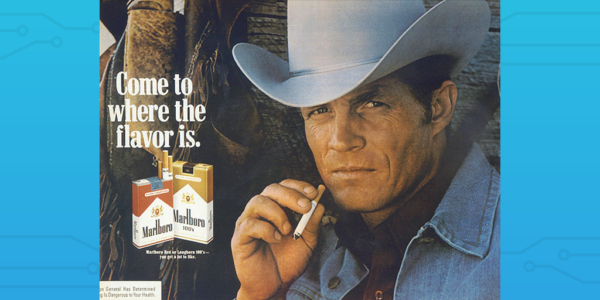
Originally posed as a cigarette for women, Marlboro decided to target the “small niche” of men worried about the health problems associated with smoking. To do so, they posed the brand to be as masculine as possible – no small feat considering that filter cigarettes were seen as feminine at the time.
Selling customers on the product alone wasn’t enough when that same product wasn’t seen in the way they needed. Instead, Marlboro built up a brand image of masculinity which they intrinsically linked to their cigarettes.
The Marlboro cowboy is one of the greatest marketing campaigns to have existed, as noted by David Ogilvy himself (the father of modern advertising – see Ogilvy on Advertising, p.15). This rugged portrayal, combined with the harsh, habit-creating flip-top of the cigarette pack and design evoking the wearing of a medal all helped Marlboro break through the stigma associated with their product and secure a solid business practice.
They didn’t do it by selling the product – their cigarettes tasted almost the same as most other available brands. They won by selling the idea of their business as a masculine one.
Motivate employees with the idea behind their work
If your employees don’t believe in their work they won’t be giving it their all. This ties into the idea of treating your business as your product – you need to sell your team on the business if you want them to treat your systems with respect and uphold your standards.
If your whole team isn’t working in line with your value statement and mission statement, disaster is bound to strike. Just look at Zenefits – their bad processes and practices destroyed a previously solid reputation due to employees (including former CEO Parker Conrad) cutting corners so badly that they broke insurance laws.
Team building activities are good but they’re not enough. Employees need to believe in their peers and the service they’re providing in order to present a united front.
It’s also vital that your employees all believe in the same idea of your business which fits with your brand position and target audience. A legal firm would seem unprofessional if one of their teams acted too casual, whereas a cafe would likely be seen as more welcoming with a little casual conversation between servers and customers.
Customer service is a great example of this idea in practice.
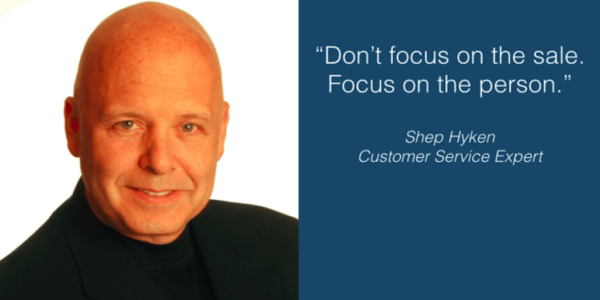
Take this example from Shep Hyken – a customer service expert and bestselling author. He was given a dish in a restaurant which differed from the menu description and didn’t want it as a result (the chef added peas). His server was happy to deal with the problem but was interrupted by a manager who took a decidedly less friendly approach.
Almost everyone’s heard the phrase “the customer is always right”, and while it might not always be true, it’s not a bad way to treat your interactions with them. If you want them to be happy with their experience and thus return in the future, you need to treat them with respect.
The initial server did this, apologizing to Hyken and trying to do something about it. The manager, however, barged in and flaunted that good impression in his face.
It doesn’t matter that the server was nice about it. Bad experiences are more memorable, and so the overall impression from that meal (at least, if Hyken hadn’t been there before) would have been a negative one. That one manager acting out of sync could have cost the business a customer, instead just shaking the confidence and loyalty of a returning patron.
Don’t confuse your customers with employees that act differently. They don’t need to be robotic in their responses but presenting a united front and customer experience with the ideas fueling their actions is a great way to get that united front.
Make topics human to make them interesting
Gerber uses the framework of a baker named Sarah to provide context for the topic in the E-Myth, which humanizes concepts like process management and the attitude business owners should adopt. By themselves, these are things that can easily become dry and boring but Gerber ingeniously circumvents that problem.
It’s a tactic that literally any business can use to resonate with their target audience, employees, and potential investors better.
Let’s go over a few examples of this in action to show how it can be applied.
- Case studies
- Unique examples
- Address the reader
- Make it personal
We’ve used case studies in the past to highlight various features and benefits of Process Street, from managing operations and onboarding employees to handling business growth and going paperless. Things like this or client onboarding aren’t that interesting on their own but, when framed in the context of a real business with tangible benefits, the topic is much more engaging.
Not to mention that the human aspect makes your claims more trustworthy. You’re not pulling benefits from out of a hat – customers are saying all of this of their own accord.

As for using unique examples, the Process Street blog is full of them. If you have to explain a complex topic or want to talk about an important subject that’s quite dull, using weird and novel examples of the topic in action can give readers something to latch onto.
Another easy way to make a human connection with your audience is to address them directly. Don’t talk about “we” and “businesses” in general. Talk to them and their team. Pull your audience into your work (be it blog posts or product descriptions) by talking to them directly.
For example, which of these is more interesting and grabs your attention?
“An easy way to interest readers is to address them directly.”
Or this:
“Talk directly to your readers to get them interested.”
Heck, look through the entire post – I’ve been talking to you this whole time.
As for making it personal, this can be done in many ways. It’s partly covered by making sure that you address readers directly but can be done with things like customer segmentation and tailoring content, offers, products and campaigns to those segments or customer personas.
Take Barbie for example.
They know that not everyone is interested in the same thing. They also know that they have the resources to cater to their audience’s tastes by providing a wide range of dolls, thus holding their interest and staying relevant.
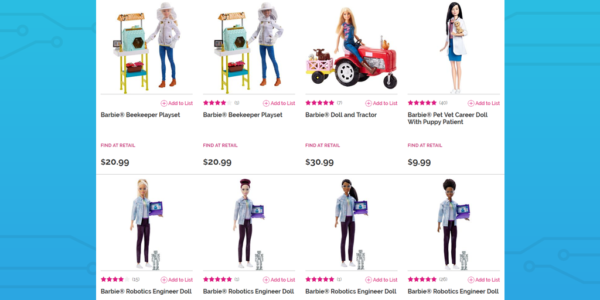
Barbie’s original design (and her updates) were and still are popular but they wouldn’t make Barbie dolls doing everything from beekeeping to robotics engineering if there wasn’t a market for it.
On a smaller scale, startups use customer segmentation with services like Mailchimp to send tailored content to different email lists. That way they can avoid annoying their audience and keep them reading the content that they want to promote.
The E Myth summary: Focus on the business
Perhaps the most impressive aspect of Gerber’s advice is how widely applicable it is. It doesn’t matter what business you’re creating – the idea of focusing on creating a business and focusing on it instead of just creating a job for yourself or getting stuck doing small tasks is key to lasting success.
Hopefully, this E Myth summary has helped you understand the book a little better. Real-world examples are a great way to see what works and what doesn’t without having to make the mistakes yourself.
Have any tips you’d like to add for setting up a new business? Let me know in the comments below!
Business & Finance Articles on Business 2 Community
(155)
Report Post